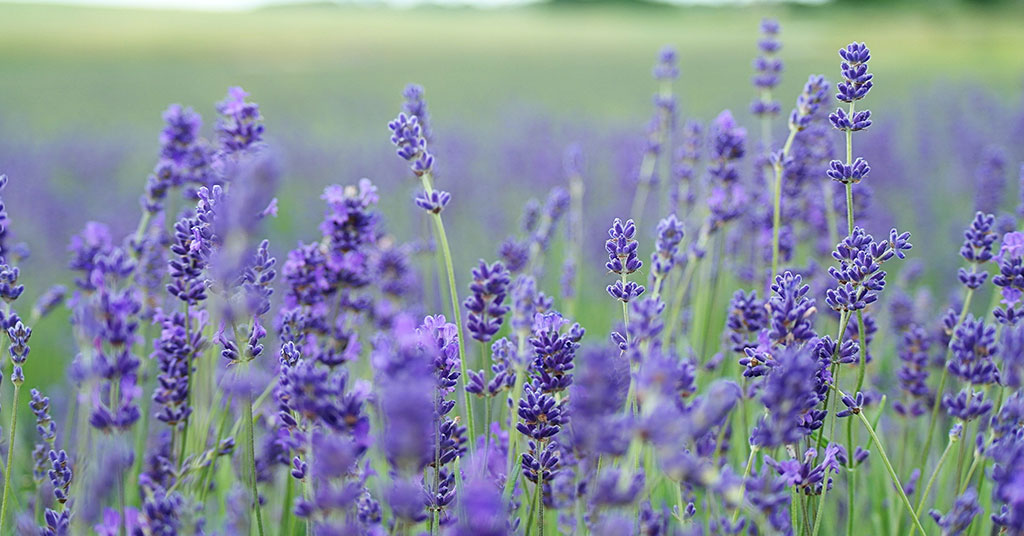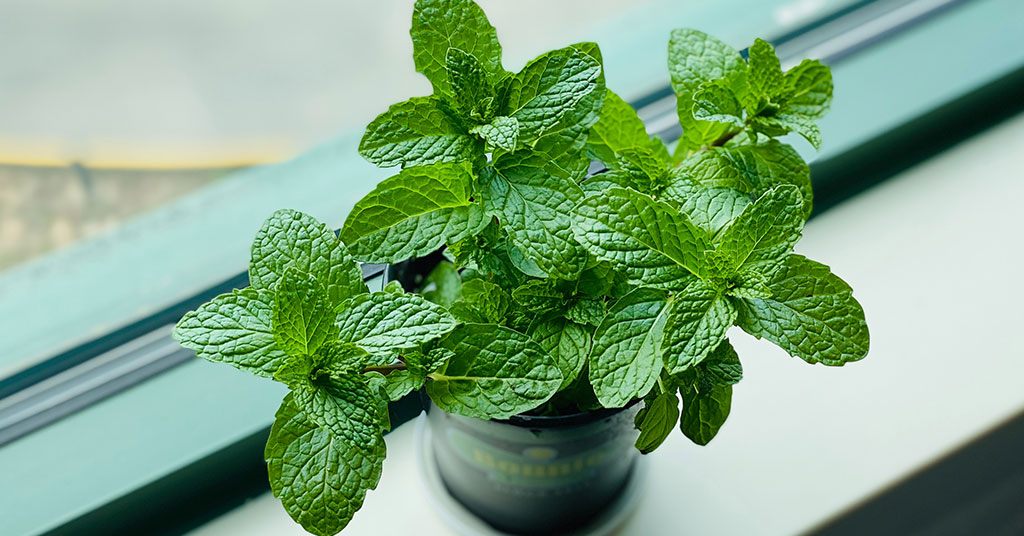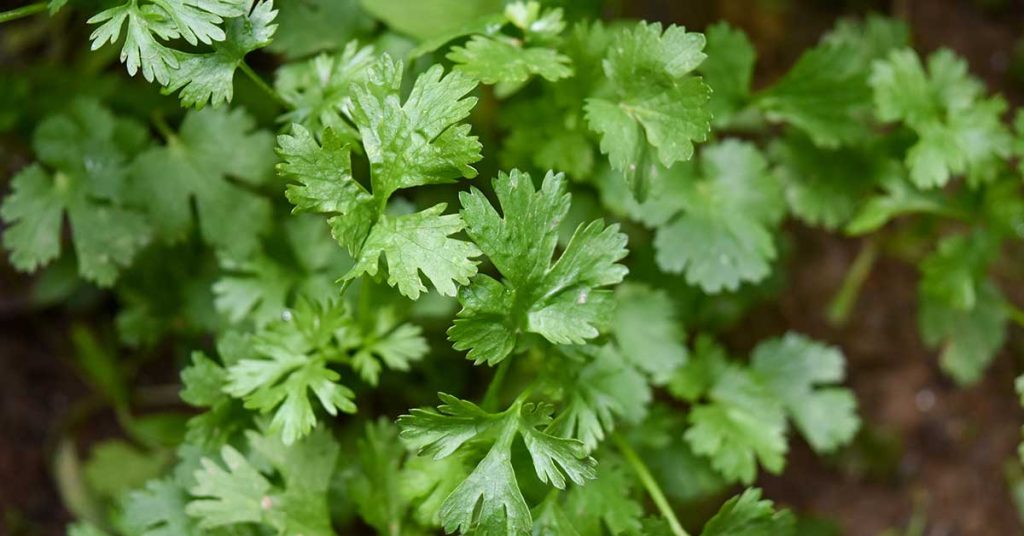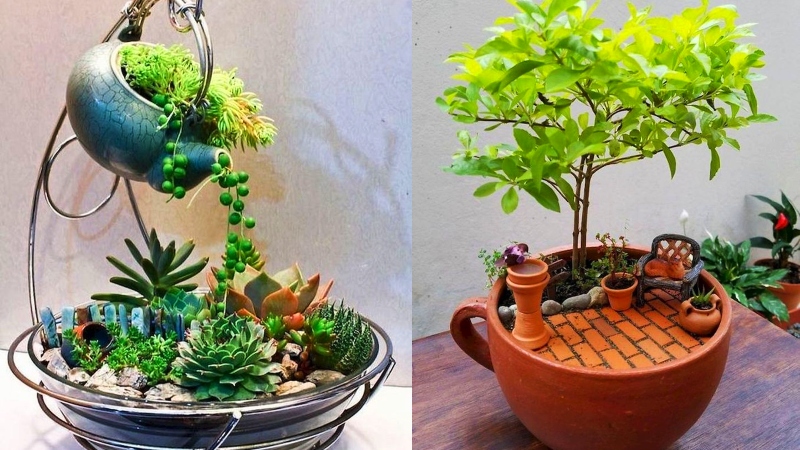Herb gardening is a rewarding hobby that has been practiced for centuries and is gaining popularity today. Herbs are incredibly versatile and can be used in a range of recipes, medicines, and even as decoration. Gardening with herbs has many benefits, including providing a sense of relaxation and satisfaction, as well as being an eco-friendly way to enjoy fresh, healthy foods and herbs. By following the steps outlined in this article, you can learn how to start your own herb garden, from finding the right herbs and location to harvesting and preserving the herbs.
Herb Gardening For Beginners
Basil, parsley, thyme, sage, and cilantro are all herbs, but that doesn’t necessarily mean they have the same needs as one another. Cilantro and parsley tend to enjoy part shade, getting only three to four hours of sunlight every day. Basil, on the other hand, likes full sun, at least six hours of direct sunlight every day.
Herbs also have a tendency to grow differently from one another. Some herbs, like basil and thyme, grow directly upward. Others, like mint, oregano, and marjoram grow outward, spreading as far as four feet. If your garden includes cilantro, dill, parsley, and basil, you’ll only need to space your plants one to two feet. If you’re growing rosemary, mint, or oregano, you’ll need to give them more room.
Your herbs may also require different watering routines. Rosemary does well when it gets a bit dry, but basil is a thirstier plant, requiring a little bit more water. As long as you do your research on each herb’s needs, herb gardening will come easy to you.
12 Easiest Herbs To Grow
There are a variety of easy herbs to grow, even for beginners, that can be planted in an outdoor garden or in pots indoors. Herbs such as basil, chives, oregano, thyme, sage, mint and parsley are all easy to grow and require minimal maintenance. With the right preparation, these herbs can provide you with an abundance of delicious flavors and aromas to use in your cooking. These are the 12 easiest herbs to grow:
Thyme

Whether or not I even use them in the things I cook, I love to grow herbs. One of the herbs you will always find in my garden is thyme. It’s a beautiful, fragrant, low-growing perennial herb that erupts in flowers that my local native pollinators just can’t seem to get enough of, and frankly, I don’t think I can get enough of them either. Let’s talk about this awesome little herb and how you can grow it in your garden too. Some common varieties of thyme include:
- Common Thyme (Thymus vulgaris)
- Lemon Thyme (Thymus citriodorus)
- Silver Thyme (Thymus serpyllum)
- Orange Thyme (Thymus fragrantissimus)
- Wooly Thyme (Thymus pseudolanuginosus)
- Red Creeping Thyme (Thymus praecox)
- Caraway Thyme (Thymus herba-barona)
Sage

Growing sage is an easy and rewarding experience for any home gardener. Sage is an attractive and fragrant herb that grows best in full sun and well-drained soil. It’s a perennial, so it will come back year after year with minimal care. Sage can be grown from seeds, cuttings, or divisions. Once established, it requires little maintenance, and it can be harvested multiple times every year. The leaves can be used fresh or dried, and they make a flavorful addition to many dishes. Sage is an invaluable herb to have in any garden, and it’s sure to bring joy to any gardener. Depending on the variety, sage can grow 12-48 inches tall and have a spread of 30 inches. Some varieties of sage include:
- Common Sage (Salvia officinalis)
- Pineapple Sage (Salvia elegans)
- Mexican Bush Sage (Salvia leucantha)
- Purple Sage (Salvia officinalis ‘Purpurascens’)
- Golden Sage (Salvia officinalis ‘Aurea’)
- Tricolor Sage (Salvia officinalis ‘Tricolor’)
- Berggarten Sage (Salvia officinalis ‘Berggarten’)
- Clary Sage (Salvia sclarea) 9. Greek Sage (Salvia fruticosa)
- White Sage (Salvia apiana)
Basil

Basil is a culinary herb that’s at the heart of Italian cuisine, and it’s also the base of most varieties of pesto. There may be a discrepancy in how to pronounce it (“bay-sil” or “bah-sil”) but there’s no denying its delicious aroma. Although sweet basil may be the most famous of its kind, there are many different cultivars. In this article, we’ll talk about how to grow basil for an awesome harvest all summer long.
Whichever variety you choose to grow, basil plants will keep on giving. Unlike a crop of beets and radishes which end after the harvest, basil will continue to produce for months if they are treated well. Best of all, basil is easy to grow once you get the hang of it. Some varieties of basil to choose from:
- Italian Basil (Ocimum basilicum)
- Thai Basil (Ocimum basilicum var. thyrsiflora)
- Holy Basil (Ocimum tenuiflorum)
- Lemon Basil (Ocimum citriodorum)
- Cinnamon Basil (Ocimum basilicum var. minimum)
- Lettuce Leaf Basil (Ocimum basilicum var. crispum)
- Purple Ruffles Basil (Ocimum basilicum var. purpurascens)
- African Blue Basil (Ocimum kilimandscharicum)
- Genovese Basil (Ocimum basilicum var. genovese)
- Siam Queen Basil (Ocimum basilicum var. thyrsiflora)
Lavender

Lavender belongs to the same family of plants as sage, thyme, and mint. There are 45 different species of plant, some that grow as annuals (for just one year) or as perennials (coming back year after year.) Some types of lavender grow as a perennial bush with woody stems. There are incredibly hardy varieties of lavender that do well in desert conditions. Some popular varieties of lavender include:
- English Lavender (Lavandula angustifolia)
- French Lavender (Lavandula dentata)
- Spanish Lavender (Lavandula stoechas)
- Wooly Lavender (Lavandula lanata)
- Lavandin (Lavandula x intermedia)
- Portuguese Lavender (Lavandula latifolia)
- Spike Lavender (Lavandula spica)
- White Lavender (Lavandula alba)
- Pink Lavender (Lavandula angustifolia ‘Rosea’)
- Munstead Lavender (Lavandula angustifolia ‘Munstead’)
Mint

Mint is a wonderfully versatile perennial herb with a tendency to spread. It can be used in drinks like mojitos and tea, used to garnish salads, and can even be made into an oil. There are as many as 600 varieties in the world, each one a bit different. But by and large, your standard mint plant is going to be a perennial herb that requires full sun, most soil until well established, and is hardy to zones 3-8. Some popular and easy varieties of mint to grow include:
- Spearmint (Mentha spicata)
- Peppermint (Mentha x piperita)
- Bergamot mint (Mentha x citrata)
- Apple mint (Mentha suaveolens)
- Chocolate mint (Mentha x piperita ‘Chocolate’)
- Orange mint (Mentha x piperita ‘Citrata’)
- Moroccan mint (Mentha spicata var. crispa)
- Eau de cologne mint (Mentha x piperita ‘Eau de Cologne’)
- Japanese peppermint (Mentha arvensis var. piperascens)
Dill

Dill is one of my favorite herbs to grow for a number of reasons. It’s aromatic, produces beautiful flowers that the local bees can’t seem to get enough of, and are host to black swallowtail butterfly caterpillars, which are an absolutely beautiful butterfly. In this article, we break down how to grow dill, when to harvest it, and more.
Oregano

Growing oregano is a breeze! This hardy perennial herb thrives in sunny, well-drained areas and requires minimal maintenance. Simply plant in the spring, water regularly, and harvest the flavorful leaves all season long. Oregano can be grown in the ground or in containers, making it a great choice for both gardeners and urban dwellers. It grows to up to 24 inches tall and spreads about 18 inches, which makes it a nice ground cover. With a bit of care and attention, you can enjoy the delicious flavor of homegrown oregano all year long! Popular varieties of oregano include:
- Greek Oregano (Origanum vulgare var. hirtum)
- Italian Oregano (Origanum x majoricum)
- Spanish Oregano (Thymus capitatus)
- Cuban Oregano (Plectranthus amboinicus)
- Pot Marjoram (Origanum onites)
- Wild Marjoram (Origanum vulgare subsp. hirtum)
- Mexican Oregano (Lippia graveolens)
- Turkish Oregano (Origanum minutiflorum)
Rosemary

Rosemary is a very easy plant to cultivate, and once established, this perennial, woody shrub will last for years. Rosemary is a beautiful shrub with needle-like leaves and bright blue blooms. Evergreen Rosemary blossoms bloom throughout the spring and summer, infusing the air with a pleasant pine scent. Gardeners use this lovely herb frequently as a decorative plant in the landscape as well as for flavoring foods.
Chives

When it comes to herb gardening, growing chives is something I don’t think I could do without. Every garden I’ve ever planted has a little section devoted to chives. Their flavor is great and I love their pink, tuft-like flowers. Chives are remarkably easy to grow, often requiring next to nothing from the gardener who gives the plant a home. In this article, we’ll be doing a deep dive into growing this simple herb.
- Common Chives (Allium schoenoprasum)
- Garlic Chives (Allium tuberosum)
- Chinese Chives (Allium tuberosum var. chinense)a.
- Siberian Chives (Allium nutans)
- Giant Siberian Chives (Allium ledebourianum)
- Welsh Onion (Allium fistulosum)
Parsley

Parsley is an easy-to-grow herb that will thrive in full sun and produces leaves up to 24 inches tall. It prefers well-drained soil that is amended with compost and a slightly acidic pH level. It prefers a cool climate and will do best in temperatures between 50 and 70 degrees Fahrenheit. Plant parsley seeds directly in the garden bed or container, spaced at least 6 to 8 inches apart. Water regularly, making sure the soil is evenly moist but not soggy. Harvest the leaves as needed, cutting them off close to the stem with scissors. Parsley can also be grown indoors in containers, as long as it gets plenty of sunlight. Popular varieties of parsley include:
- Parsley (Petroselinum crispum)
- Italian Parsley (Petroselinum crispum neapolitanum)
- Hamburg Parsley (Petroselinum crispum tuberosum)
- Moss Curled Parsley (Petroselinum crispum crispum)
- Triple Curled Parsley (Petroselinum crispum var. crispum)
- Plain Leaf Parsley (Petroselinum crispum var. neapolitanum)
- Hamburg Rooted Parsley (Petroselinum crispum var. tuberosum)
- French Parsley (Petroselinum crispum var. crispum)
- Flat Leaf Parsley (Petroselinum crispum var. latifolium)
- Giant of Italy Parsley (Petroselinum crispum var. giganteum)
Cilantro

Cilantro is an annual herb used in a number of dishes, like guacamole. It is part of the Apiaceae family, which contains 3,700 species, including parsley, celery, and carrots. Both cilantro the herb and coriander the seed come from the Coriandrum sativum plant. Don’t get confused! You can harvest both from this single plant. Some varieties of cilantro you can grow in your herb garden include:
- Coriander (Coriandrum sativum)
- Long-Leaf Cilantro (Coriandrum sativum var. longifolium)
- Santo Cilantro (Coriandrum sativum var. santo)
- Chinese Parsley (Coriandrum sativum var. chinense)
- Culantro (Eryngium foetidum)
Lemongrass

Lemongrass is an incredibly easy herb to grow! All that is required is a well-draining soil and a warm, sunny spot. It can be grown in containers, or even in the ground. To get started, simply purchase a few lemongrass stalks from the grocery store, cut off the top section, and plant the base in the soil. Water regularly and it will soon sprout new leaves and start to thrive. Lemongrass is a hardy herb that is low maintenance and can be harvested over and over again throughout the growing season. This annual grows up to 24 inches tall and desires lots of fertile compost.
Can you start an herb garden in containers?
Herb gardens are one of the easiest to grow in containers! Choosing long, rectangular containers gives you the opportunity to plant several herbs all in a row, giving them ample space to grow. You can also grow each herb in its own container, enabling you to tailor the care you provide each individual plant based on its unique needs. Growing herbs in containers gives you the chance to move them indoors during the winter too, allowing nearly year round growing.
Can you herb garden indoors?
Herb gardens can be successfully grown indoors if you have a south-facing window (if you’re in the northern hemisphere) that gets lots of direct sunlight. You can also grow herbs under a lamp specifically designed for growing plants. Herbs like rosemary, for example, are perennial and will continue to grow year after year in the right conditions. Others, like basil and parsley, are annuals, meaning you will typically only get one growing season out of them. I’ve moved basil indoors before and it continues producing for an extra month or two, but tends to die off by December.
Read More: How To Grow Basil For A Bountiful Harvest All Season
When to harvest your herbs
Harvest time is the best time for your herb garden! Once your plants are established and have put on lots of growth, usually after a couple months, you can begin harvesting the herbs. Because you don’t typically need a great deal of herbs for a dish, your plants can be slowly harvested, picking just a few leaves or flowers at a time, based on your needs.
We do recommend with some herbs that you trim them occasionally to yield better, fuller growth. In the case of basil, trimming off some or all of the flowers will yield more leaf growth. But if you want your basil to go to seed, let a few flowers remain! Bees love them too.
We hope our guide to herb gardening for beginners was helpful! Most of all, don’t stress out about your plants and have a good time experimenting with different growing strategies. Enjoy!
Keep Reading: 16 Plants That Repel Bugs











